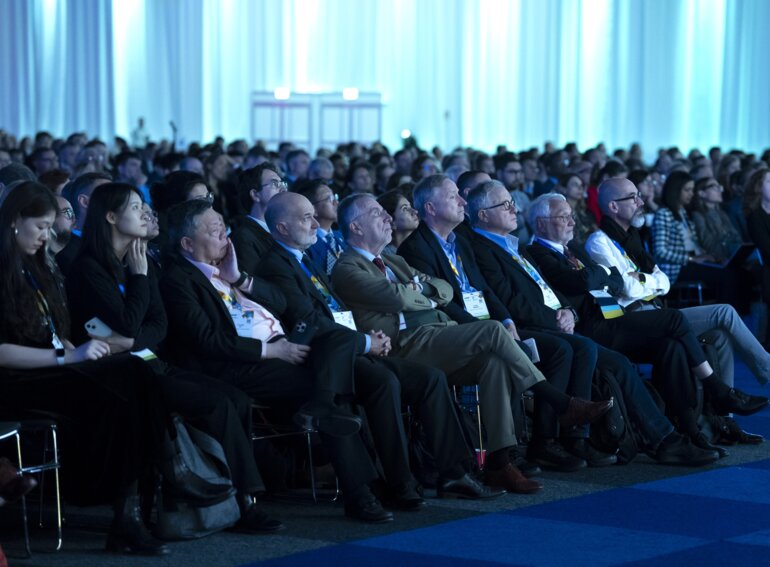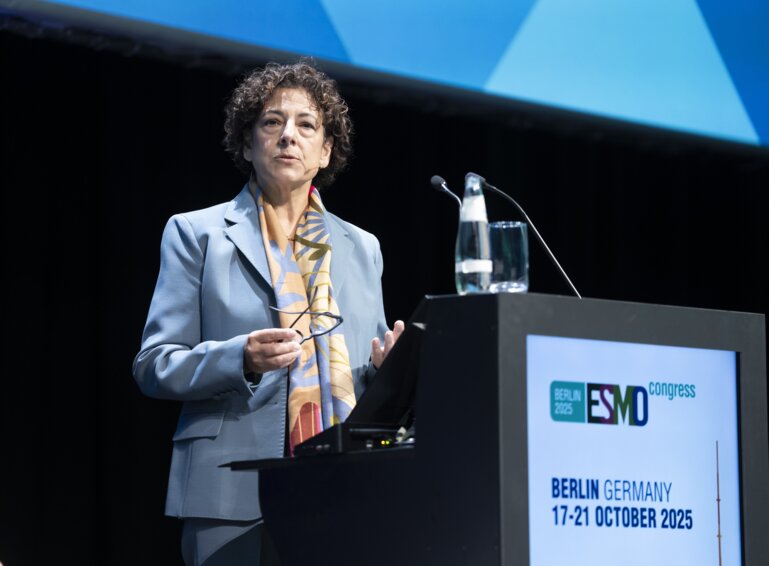In the evERA BC trial, giredestrant plus everolimus led to a prolonged progression-free survival
The combination of giredestrant, an oral selective oestrogen receptor antagonist and degrader (SERD), and everolimus may represent a new effective treatment option for patients with ER-positive, HER2-negative advanced breast cancer who were previously treated with cyclin-dependent kinase (CDK) 4/6 inhibitor and endocrine therapy, according to primary results of the phase III evERA BC trial (LBA16).
“Currently, the treatment options for patients who were pre-treated with CDK4-6 inhibitors are a little bit disappointing. There is a ceiling for medium progression-free survival (PFS) that is 6 months, and this account not only for single-agent therapies, but also when we have some combinations,” highlighted Prof. Alessandra Gennari, University of Piemonte Orientale, Novara, Italy, at the ESMO Congress 2025 while discussing the study data.
Oral SERDs have emerged as a promising therapeutic approach when resistance to endocrine therapies in the post-CDK inhibitor setting occurs, showing to be especially effective in patients with ESR1 mutations (Cancer Treat Rev. 2025 Apr:135:102924 ). In the evERA BC, giredestrant plus everolimus demonstrated to significantly reduce the risk of progression by 44% in the intention-to-treat (ITT) population (n=183) compared with standard-of-care endocrine therapy plus everolimus (n=190) (stratified hazard ratio [HR]=0.56; 95% CI: 0.44-0.71, p-value= <0.0001). In the ESR1-mutated population, which accounted for 55% of the total patients involved in the study, the median progression free survival (PFS) was 9.99 months compared with 5.45 months in the giredestrant and comparator arms (HR=0.38; 95% CI: 0.27-0.54, p-value= <0.0001). The PFS benefit was consistent across pre-specified subgroups in both populations. Median follow-up was 18.6 months.
“There was also a trend for an improved survival in both the ITT and the ESR1-mutated,” added Gennari. “Safety profile was tolerable, as with any other SERD, and toxicity is mostly everolimus-related.”
During the Congress session, Gennari also noted that data are clear, suggesting that “a comprehensive, multi-target approach addressing ER-related pathways has the potential to re-establish endocrine sensitivity after a CDK4-6 inhibitors.” However, as the number of effective agents increases, novel issues need to be addressed. “Patient selection matters, and we have seen that homogeneous studies, including homogeneous patient populations, yielded the best results. Also, combination therapies prevent the early progression in the Kaplan-Meier curve decline that was seen in past trials, and overcome the 6-month PFS barrier, but, careful patient-centered selection remains key,” she concluded. “Future challenge will be to deal with the attrition rates and to plan the treatment of our patients upfront. And finally, we are talking about metastatic breast cancer: we will have maybe many options, but clinical judgments and shared decision with our patients should always be pursued.”








